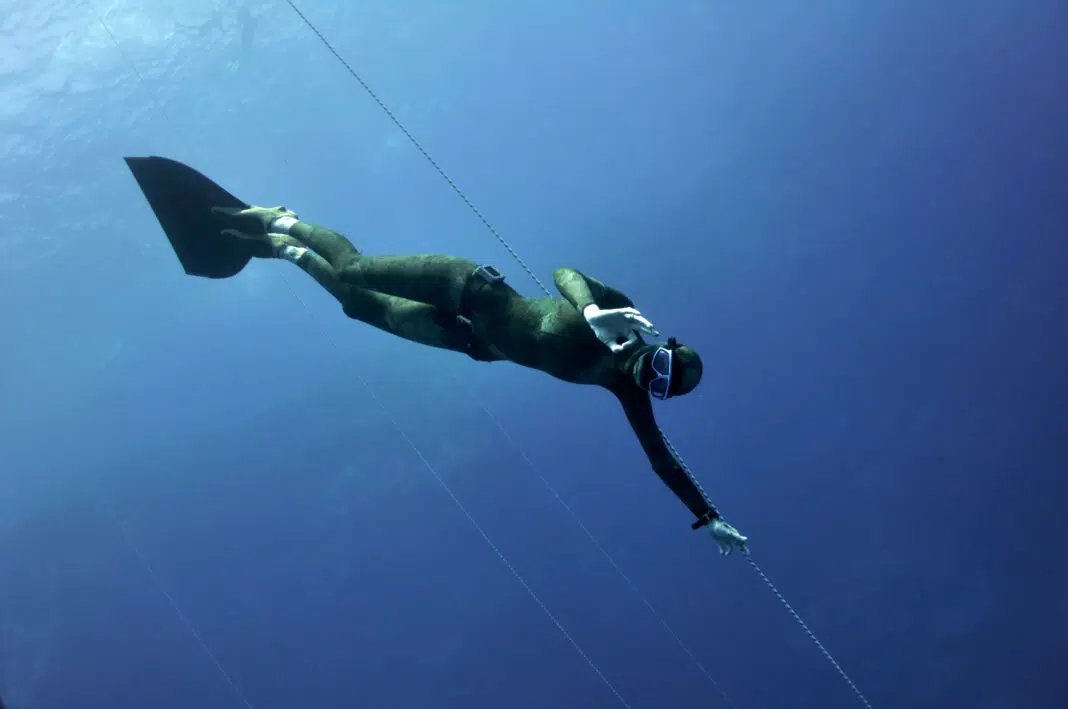While freediving, defined as “diving underwater on a breath-hold,” has been around for thousands of years as a means for hunting and gathering, humans didn’t start going deep until about 1949.
Scientists theorized that the surrounding pressure would crush humans at a depth of 30m (98ft). However, Raimondo Bucher, a Hungarian-born Italian Air Force captain, shocked everyone by diving to that very depth. That year was the birth of modern freediving, and freedivers began organizing freediving competitions in the following decades and continued pushing the limits of what is considered “deep.”
However, there is no actual set definition for deep freediving – it mostly depends on your perspective.
If you have never freedived before, diving to a beginner freediving course requirement (for agencies such as Molchanovs and AIDA) to 12m (39ft) may seem deep. If you are already a freediver, you may consider the Level 2 requirement of 24m (79ft) daunting. For more perspective, instructor requirements for top freediving agencies require candidates to dive to 40m (131ft) with bifins.
But if you look at national and world records, they are often 2-3 times deeper than standard freediving instructor requirements. Check out the records below by discipline for some perspective on the depths top freedivers have reached.
Deep freediving world records by discipline
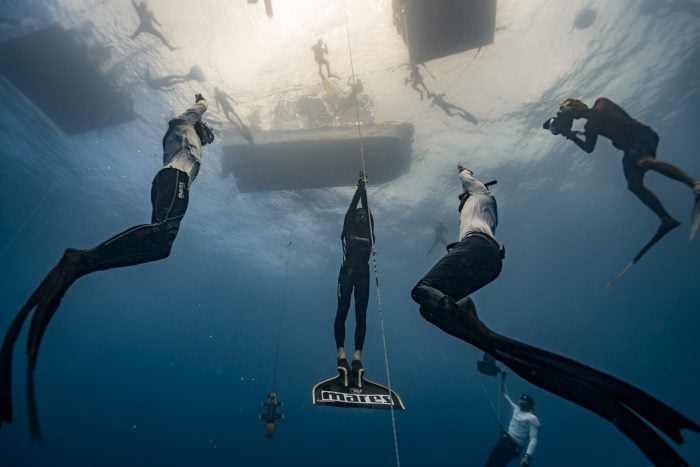
Constant Weight (CWT)
Constant Weight, or CWT, involves a freediver using bifins or a monofin (the records listed below were set with monofins) to propel themselves down a diving line and back up. Freedivers who use monofins must be proficient in the dolphin kicking technique.
Men
- Alexey Molchanov (RUS) – 131m / 430ft
- David Mullins (NZL) and Guillaume Néry (FRA) – 126m (413ft)
- Herbert Nitsch (AUT) – 124m (407ft)
Women
- Alenka Artnik (SVN) – 122m (400ft)
- Alessia Zecchini (ITA) – 117m (384ft)
- Hanako Hirose (JPN) – 106m (348ft)
Constant Weight with Bi-Fins (CWTB)
Constant Weight with Bifins, or CWTB, is a reasonably new discipline where freedivers can only use bifins to propel themselves down and up a line. In addition, freedivers can only use the flutter-kicking technique.
Men
- Alexey Molchanov (RUS) – 118m (387ft)
- Arnaud Jerald (FRA) – 117m (384ft)
- Abdelatif Alouach (FRA) – 111m (364ft)
Women
- Alenka Artnik (SVN) – 106m (348ft)
- Alessia Zecchini (ITA) – 105m (344ft)
- Marianna Gillespie (FRA) – 97m (318ft)
Free Immersion (FIM)
Free Immersion, or FIM, features freedivers who pull themselves down and up the line. They do not wear any fins at all. This discipline is challenging because dive times are longer than CWT and CWTB.
Men
- Alexey Molchanov (RUS) – 126m (413ft)
- William Trubridge (NZL) – 124m (407ft)
- Miguel Lozano (ESP) – 122m (400ft)
Women
- Alessia Zecchini (ITA) – 101m (331ft)
- Sayuri Kinoshita (JPN) – 97m (318ft)
- Jeanine Grasmeijer (NLD) – 92m (302ft)
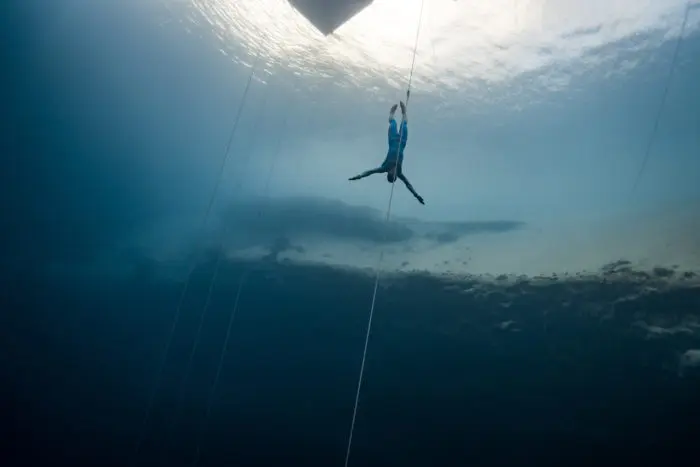
Constant Weight No Fins (CNF)
Constant Weight No Fins, or CNF, is the most challenging discipline of all, as it requires freedivers to use only their arms and legs (no fins are worn) to swim down and up the line in a modified breaststroke type of technique. As a result, dive times are very long, and lactic acid in the arms and legs builds up quickly, creating a lot of fatigue.
Men
- William Trubridge (NZL) – 102m (335ft)
- Alexey Molchanov (RUS) – 96m (315ft)
- Morgan Bourc’His (FRA) and Petar Klovar (HRV) – 91m (299ft)
Women
- Alessia Zecchini (ITA) – 74m (243ft)
- Sayuri Kinoshita (JPN) – 72m (236ft)
- Natalia Molchanova (RUS) – 71m (233ft)
Possible risks of deep freediving
If we look at a freediving instructor course as the start of what is considered “deep freediving,” we can consider dives deeper than 40m (131ft) as the end of recreational freediving and the start of deep freediving. While any sport has risks and possible injuries, freediving is all about slow progression, maintaining relaxation, and risk reduction.
The following risks do not “come with the territory,” but they might occur for a multitude of reasons, such as rushing progress, diving while sick, poor conditions, etc. It should be noted that several freedivers err on the side of caution and avoid these injuries altogether as they aim for deeper depths.
Loss of Motor Control (LMC)
A loss of motor control, or LMC, occurs at the surface when freedivers reach dangerously low oxygen levels. It causes their muscles to involuntarily spasm and jerk, but once they start breathing and reach normal oxygen levels, the spasms stop. If freedivers do not breathe, their oxygen levels continue dropping, leading to a blackout. LMCs are considered a warning sign to change the way you dive.
Blackout (BO)
A blackout, or BO, is a loss of consciousness due to extremely low oxygen levels. Blackouts are most likely to happen on the ascent between 10m (33ft) and the surface due to the significant drop in partial pressure. However, they can also occur at deeper depths or on the surface if a freediver does not perform proper recovery breathing to restore oxygen levels. Blackouts are rarely fatal; however, freedivers take them seriously and try to avoid them at all costs.
Eardrum perforation/rupture
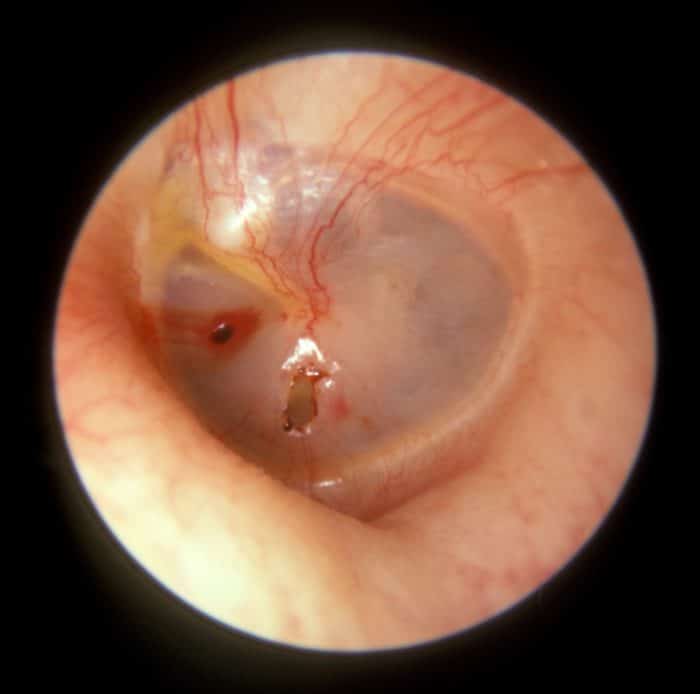
Equalizing the eardrums plays a considerable role in freediving, and as you go deeper, equalization gets tougher. Freedivers often face barriers with advanced equalization techniques, and if they continue pushing to go deeper even though equalization is failing, a hole or tear appears in the thin tissue between the outer ear and middle ear. This requires staying dry for some time to avoid infection and allow the injury to heal.
Pulmonary barotrauma (lung squeeze)
Pulmonary barotrauma, also known in the freediving community as a lung squeeze, occurs when damage or injury is caused to the lungs due to the surrounding pressure at depth. This can happen if a freediver does not have thoracic or diaphragmatic flexibility, is not fully relaxed, or makes sudden movements at deeper depths (although lung squeezes can occur at shallower depths if a freediver genuinely lacks flexibility), which puts tension on compressed lungs. This serious injury usually requires extensive time spent on land recovering.
Lung overexpansion
Athletes who pack their lungs (gulping or sipping more air into already fully-inflated lungs) can risk a lung overexpansion injury on the ascent (however, this is uncommon). When freedivers dive to deep depths, their lungs compress, and blood shifts to the chest to occupy the space left by the compressed lungs.
It is a natural reflex in mammals, but as freedivers who have packed their lungs ascend, their lungs may lag in re-expansion in the last few meters. This can result in the lungs overexpanding, so you may see freediving athletes exhaling the last few meters of their dives.
Lung packing is a highly advanced technique that should only be practiced by experienced deep freedivers under the guidance of a professional coach, if practiced at all. Lung packing should not even be considered an option until a freediver reaches depths deeper than 60m (197ft), and even then, there are deep freedivers that do not pack.
Decompression Sickness
Decompression sickness, or DCS, is a real risk in scuba diving, but not so much in freediving. When scuba divers inhale pressurized air (21% oxygen and 78% nitrogen), nitrogen remains in the body, and scuba divers continuously exhale slowly while ascending to release excess nitrogen. If nitrogen is not offloaded, it forms bubbles that can block tiny blood vessels and cause severe consequences.
While freedivers do not inhale pressurized air at depth, the 78% of the nitrogen that makes up the atmosphere is in their final breath before they descend. This nitrogen still pressurizes at depth, but it is very little compared to scuba divers, and freedivers usually exhale all the excess nitrogen at the surface.
However, performing multiple deep dives in one day may cause nitrogen to build up faster than released from the body. A general rule of thumb freedivers follow is to limit dives that are 60m+ (197ft) to only one per day.
How can you start freediving deep?
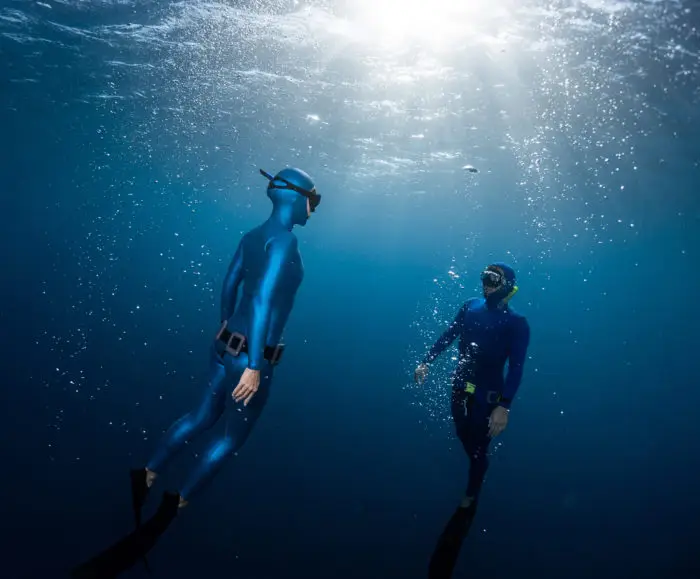
If freediving sounds like a sport that you want to explore, or if you have a deep goal you wish to pursue, you must keep in mind that freediving is still considered an extreme sport. Just as with other extreme sports like sky diving or rock climbing, you are highly advised to take a certification course from a reputable instructor rather than try to learn by yourself from books, articles, or YouTube videos.
These information sources can be considered supplementary material instead, and any new techniques should be practiced under the guidance of a licensed freediving instructor with a trustworthy agency.
Freediving instructors are there to observe and fix your technique, provide safety, and adjust bad habits that could be dangerous to you in the future. So if your goal is to dive deep, you should be ready to invest in yourself and your safety and take freediving as seriously as you would skydiving. And above all, remember the first rule in freediving – never dive alone.

